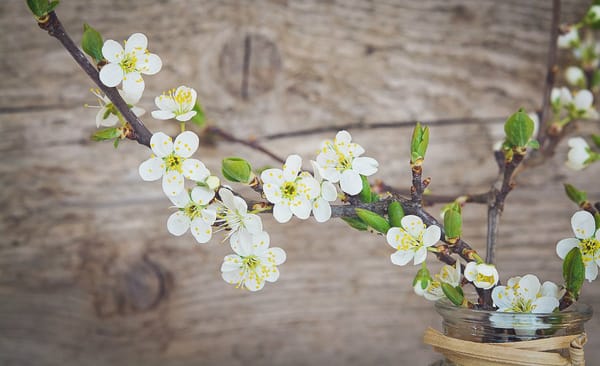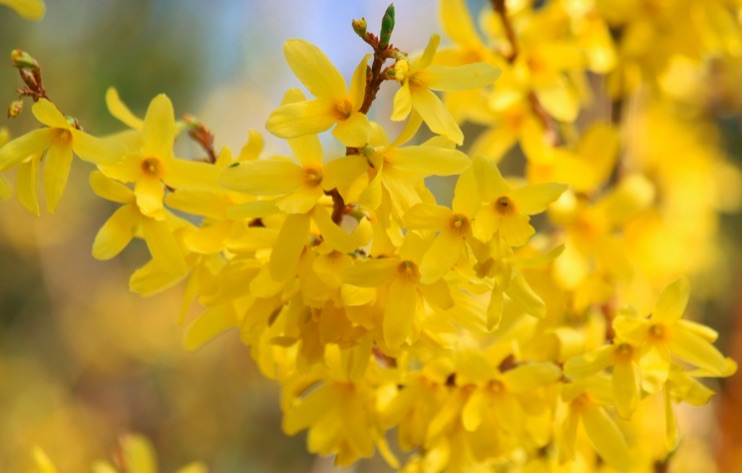How To Force Flowering Branches To Bloom Inside (When We Need Color NOW)
Soon, flowering trees will form their buds, and there are ways to make them bloom inside.

Soon, flowering trees will form their buds, and there are ways to make them bloom inside.

The scene out my windows is a palette of browns and buff, occasionally punctuated by the red streak of a cardinal or a pop of color from a blue jay dashing from one feeder to another. But it’s pretty stark out there and the recent cold snap ensures a virtual epidemic of cabin fever. Thankfully, my various amaryllis bulbs and orchids have been getting me through the past couple of months. We know spring will come, eventually. Technically, it’s due on March 19 but just because the calendar says so doesn’t mean it will feel or look like it. My solution to the dearth of color in these late winter days ahead is to force flowering branches into bloom inside.
Early spring flowering trees and shrubs form their flower buds in the fall before the plants go dormant. After a period of at least 6-8 weeks of temperatures below 40°F, branches can be cut and forced into bloom. Depending on the variety, buds will usually come out of dormancy after 1-6 weeks of being exposed to warmth and moisture.
Coincidentally, late winter is the best time to prune spring flowering deciduous trees and large shrubs, while they are still dormant. Wait for a mild-ish winter day when the temps are above freezing to head out with clean, sharp pruners in hand. Not only will you be pruning your shrubs for shape and removing crossing branches and old or diseased wood, but you will get the added bonus of a chance to bring color and fragrance into the house.

From your prunings, look for branches with lots of plump flower buds that are a half-inch or less in diameter. Flower buds are round and fat, whereas leaf buds are smaller and pointed. I cut the lengths to 18-36 inches, depending on the size of my vase.
After bringing the branches indoors, prepare a tall bucket with 3-6 inches of very warm water and floral preservative (or a can of lemon-lime soda and ½ tsp of chlorine bleach) and set aside. Fill the sink with warm water (as hot as you can stand it) and, holding the tip underwater, make a second cut on a sharp diagonal, an inch or two above the first cut on each stem. Cutting stems underwater will help prevent air from entering the stem through the cut end and blocking water uptake. If the diameter is on the thick-ish side, split the stem in half, about an inch long, or smash the base with a hammer. These openings enhance water absorption. Immediately put each stem into the prepped bucket after cutting.
Place the container in a cool (45-60ºF), shaded location. Keep the water level at its original depth and change the water every few days. A flower preservative will help prolong the vase life of the branches by controlling bacteria. Once you see the buds begin to break open, arrange in a vase and display in a spot where you can enjoy them, out of direct sunlight and away from heat sources. The cooler the spot, the longer the branches will bloom. Changing the water as it discolors will also prolong the show.
Most flowering shrubs are fairly easy to force, while trees are more stubborn (up to 8 weeks). The closer to their natural bloom time that you cut the branches, the sooner they will open. Forsythia is reliably the easiest shrub to force into bloom and it does so pretty quickly — in about two weeks. Some other options are quince, cherry, apple, crabapple, pussy willow, fothergilla, Eastern redbud, magnolia and viburnum.
If you start gathering branches now and harvest some cuttings every week, you can have a succession of flowers right up until spring arrives for real.








